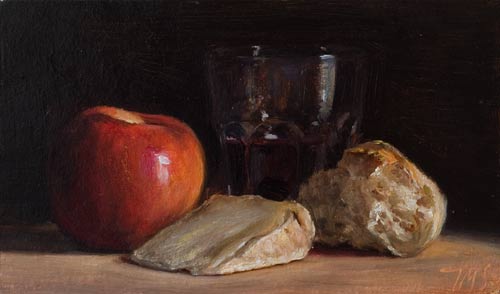 Every woman, high or low, ought to know how to make bread. If she do not, she is unworthy of trust and confidence; and, indeed, a mere burden upon the community. –William Cobbett
Every woman, high or low, ought to know how to make bread. If she do not, she is unworthy of trust and confidence; and, indeed, a mere burden upon the community. –William Cobbett
Today this should probably read “Every homemaker” instead of “Every woman” but, as Cobbett composed this treatise in 1821, he assumed that the home and cooking were the domain of the women and the men were to labor outside the home.
Bread
I have a mixed relationship with bread. I love to make it and eat it, and have for many years, yet I don’t eat a lot of it as it seems to easily fatten me up and doesn’t always sit well in my gut; the same reasons I rarely drink beer these days. However, I am very aware that bread, in one form or another, has been a staple in the Western World for millennia and should not be overlooked so I occasionally dive in and start making bread regularly again. I can’t stand the modern garbage marketed as “bread” as it barely resembles the greatness of a real, leavened or fermented loaf.
By the early 19th century, big business was already encouraging families to buy bread instead of bake at home and there can be some sense in this, especially in the city (fuel cost for cooking, the efficiency of oven sharing, etc.). Cobbett thought this purchase instead of make mentality was one of the many atrocities that kept laboring families unnecessarily poor. Foolish practices that kept the poor from ever improving their lot was a major theme of his life and we can learn from this.
I have included his treatise on bread here. He also spreads himself pretty well as to how he despises the potato as Ireland’s lazy root (before the famine).

Despite the bad press and nay-saying of diet fanatics in recent decades, real bread still finds its way onto my table. What do you think?











